Asus’ ROG assault
No sooner had we recovered from the previous day, Asus sprung a second press conference, this time with the agenda firmly focusing on its Republic of Gamers product line. A long-term staple of Asus’ product line-up, some may have been a little surprised by Asus’ decision to launch its line of Z77 motherboards with the reasonably priced Maximus V Gene. This then was the reveal of the RoG high-end boards, with both the Asus Maximus V Extreme and Maximus V Formula breaking cover for the first time.The Extreme is, as you’d expect, Asus’ top-end, feature-loaded Z77 board, with the obvious highlight support for 4-way SLI or CrossFire. All four slots offer up to 8x PCI-E 3.0 lanes (the equivalent of 16x PCI-E 2.0 lanes when it comes to bandwidth), supplied via a PLX splitter chip fitted beneath the illuminated RoG logo in the middle of the board. As Asus’ new flagship board the Extreme also carries the LN2 overclocking features that pro-verclockers demand, with temperature sensors, VGA and CPU overvolting headers and the return of Asus’ OC key device, which provides a video overlay interface for on-the-fly overclocking. It’s sure to arrive at an eye-watering price though.
More towards the sensible end of the market however was the Maximus V Formula, the standard ATX RoG motherboard for Asus’ Z77 line-up. It didn’t seem to differ too much from the current Maximus V Gene, other than the increased board size and addition of a third full-size PCI-E 3.0 port. There’s no PLX chip though, so running three-way SLI or Crossfire will see the ports provide 8x, 8x and 4x PCI-E 3.0 lanes.
One key addition to the Formula though is that of integrated VRM water-cooling support. A channel runs through the large VRM heatsink arrayed to the left and above the CPU socket, with 3/8in fittings at either end. While a nice extra for the high-end users likely to spend on this board, the decision not to simply use fixed 3/8in barbs instead of standard 1/2in threaded holes is a bit baffling and means the Formula isn't compatible with 1/2in tubing, or able to use fancy compression fittings.
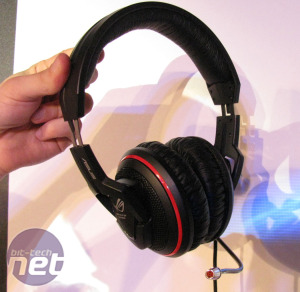

A new noise-cancelling headset dubbed Orion debuted alongside a USB sound processor equipped version of the Vulcan ANC
As well as shiny motherboards, Asus also refreshed its line of gaming headsets, currently led by bit-tech favourite, the Vulcan ANC. The new Vulcan Pro now slots into the line-up above the ANC, offering, as far as we could tell, a near identical headset, with the addition of an optional USB sound processor with integrated headphone amp.
Less familiar though was the all-new Orion series of headsets, offering larger 100mm circum-aural ear-cups, 50mm drivers and adjustable clamping force (the force at which the headset hugs your head). The active noise cancellation of the Vulcan is also present.
Wrapping up the show was an Asus 7970 3GB Matrix, the custom cooled and overclocked card bearing all the signs of its Matrix lineage with LED lighting, 20 power phases, over-volt and fan override buttons and support for 6-displays from the single card thanks to a bank of DisplayPorts.
With Asus’ product announcement barrage abated, we grabbed our gear and headed off to the show proper to check out the best of what the rest of the industry had to offer. Check back for Computex Diary part 2 next week!

MSI MPG Velox 100R Chassis Review
October 14 2021 | 15:04


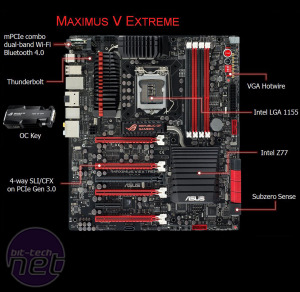
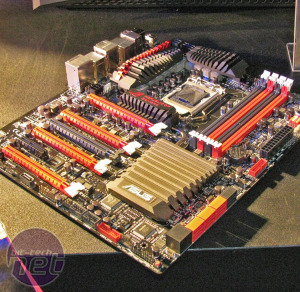
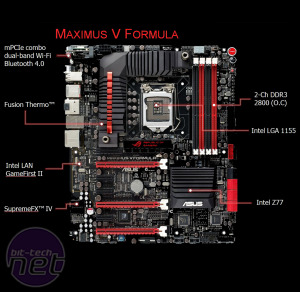
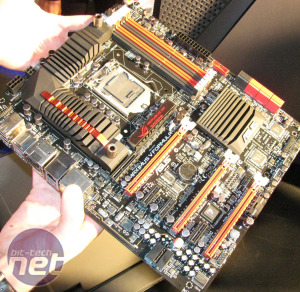
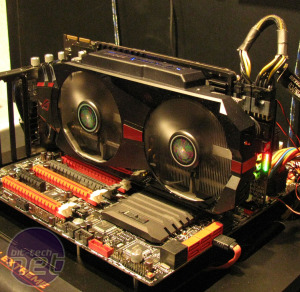
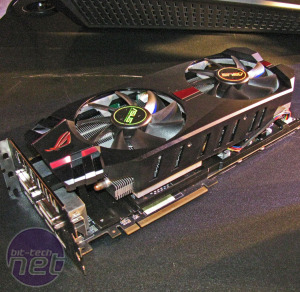







Want to comment? Please log in.